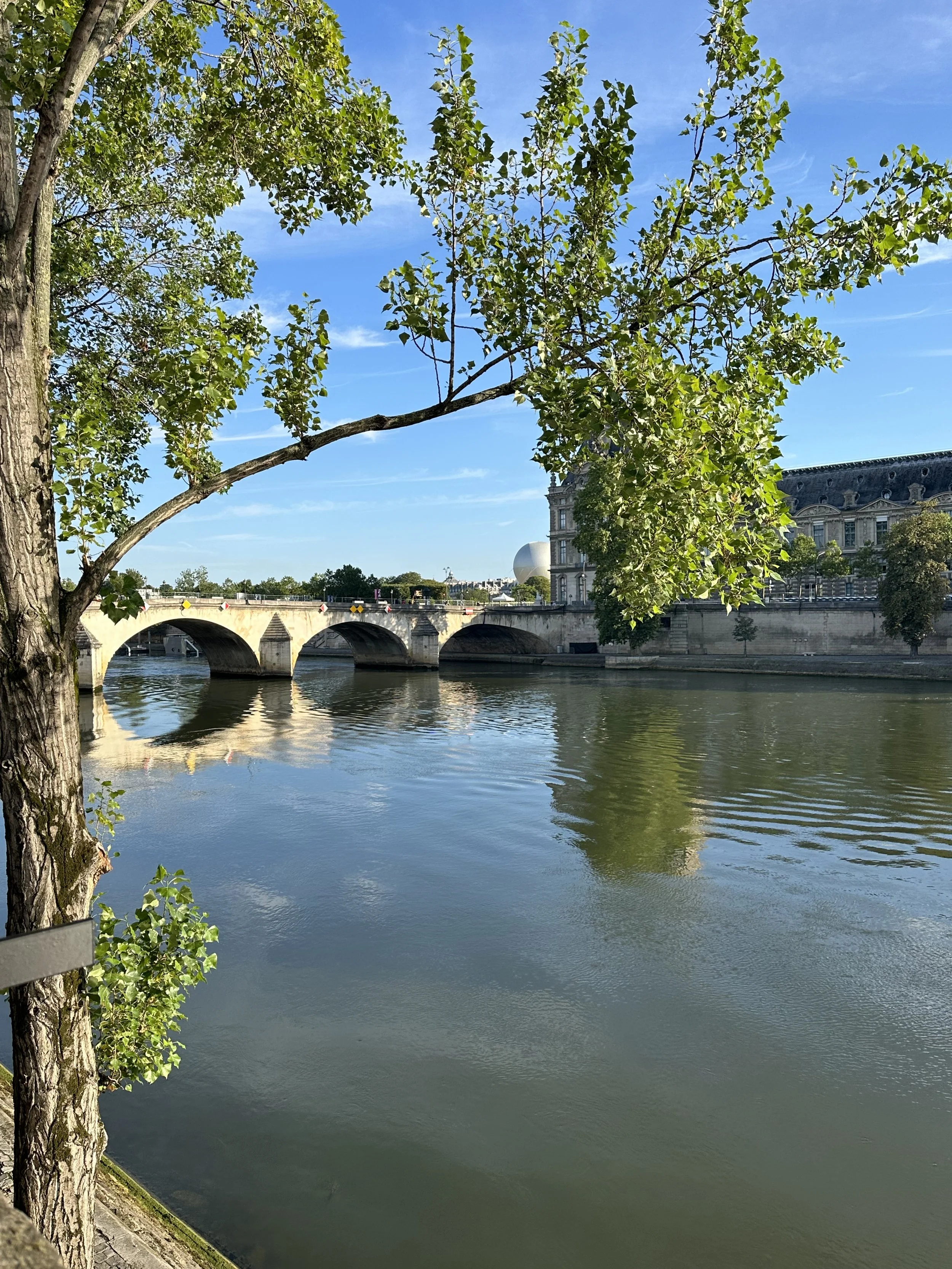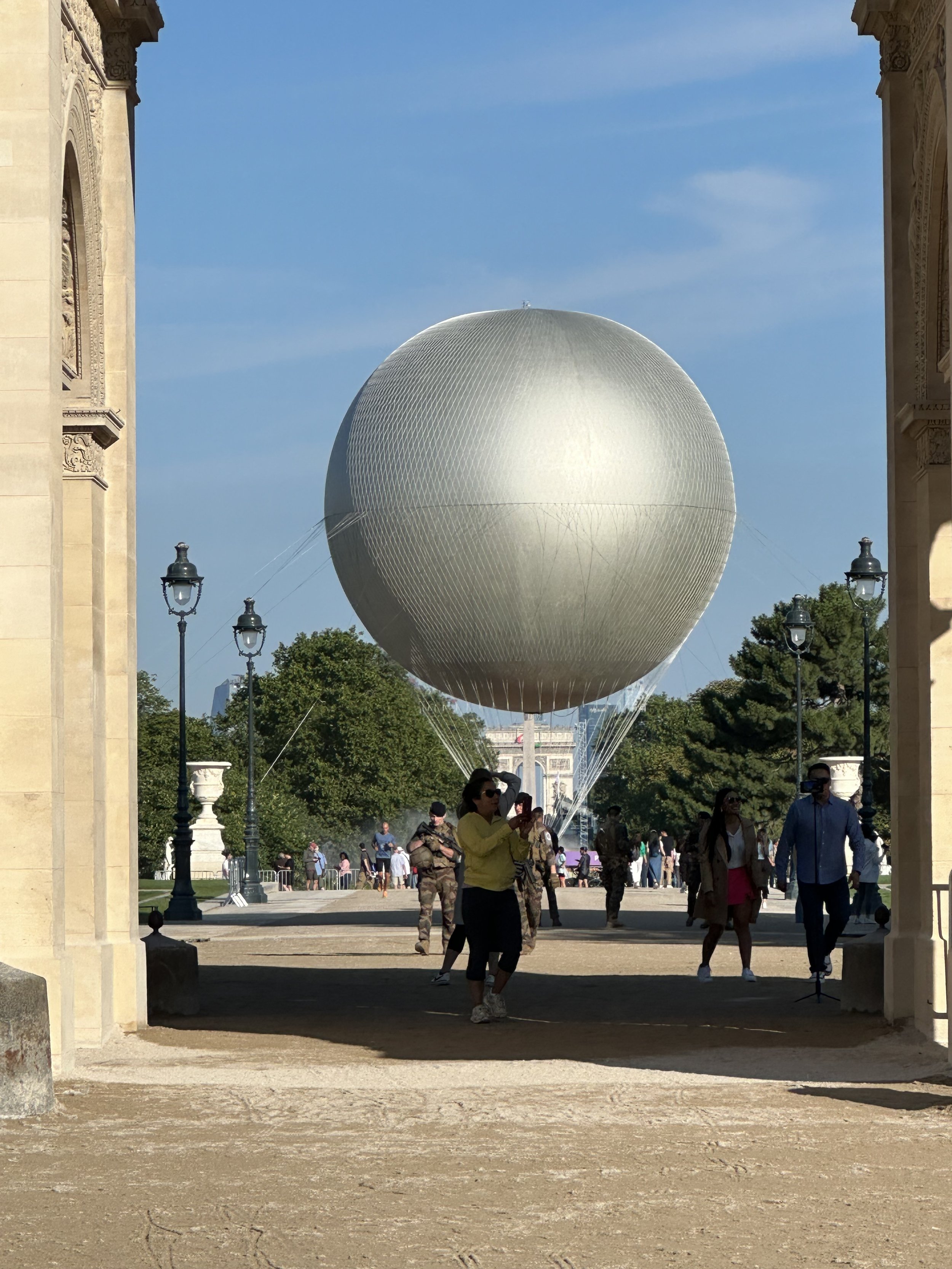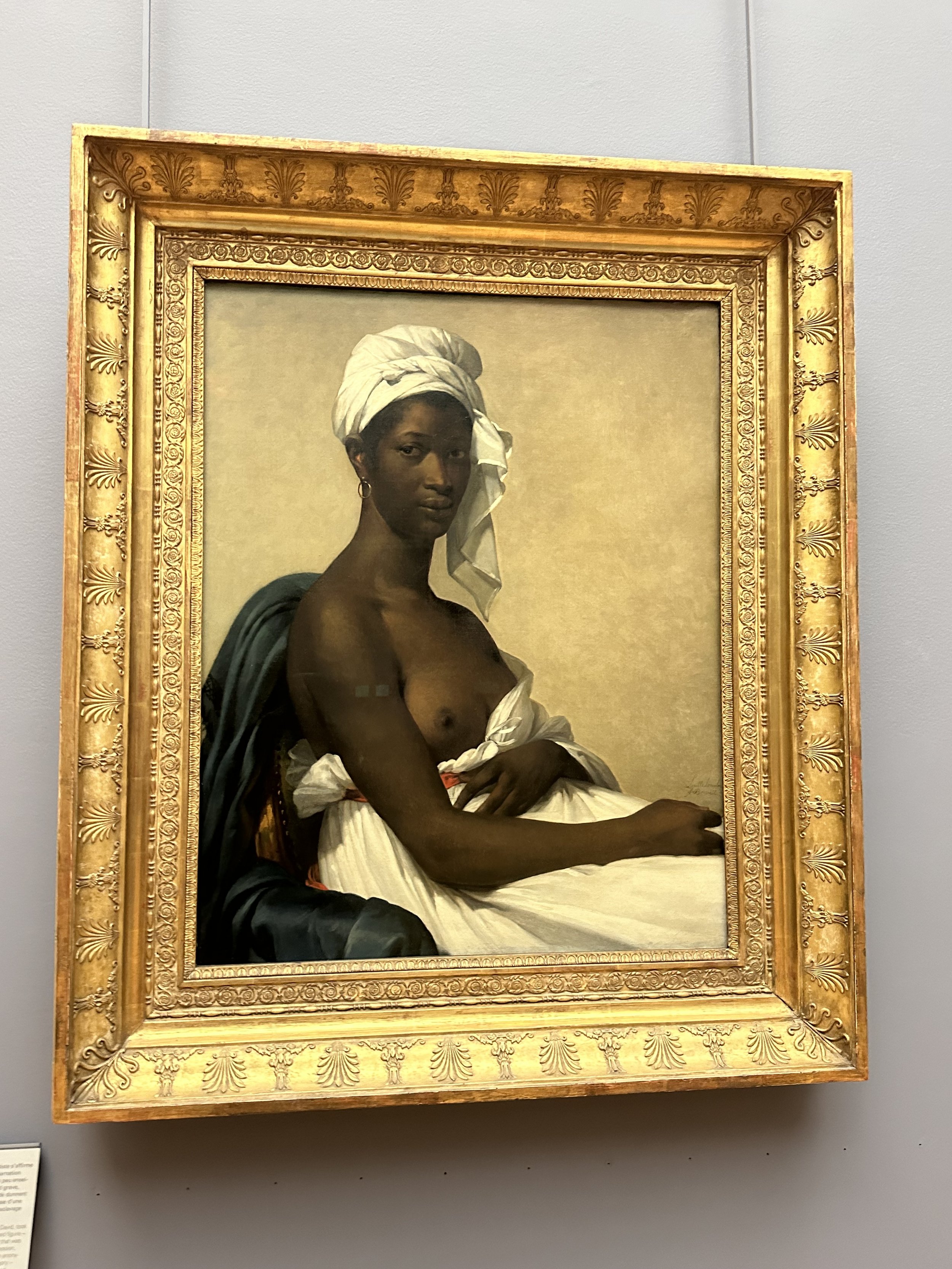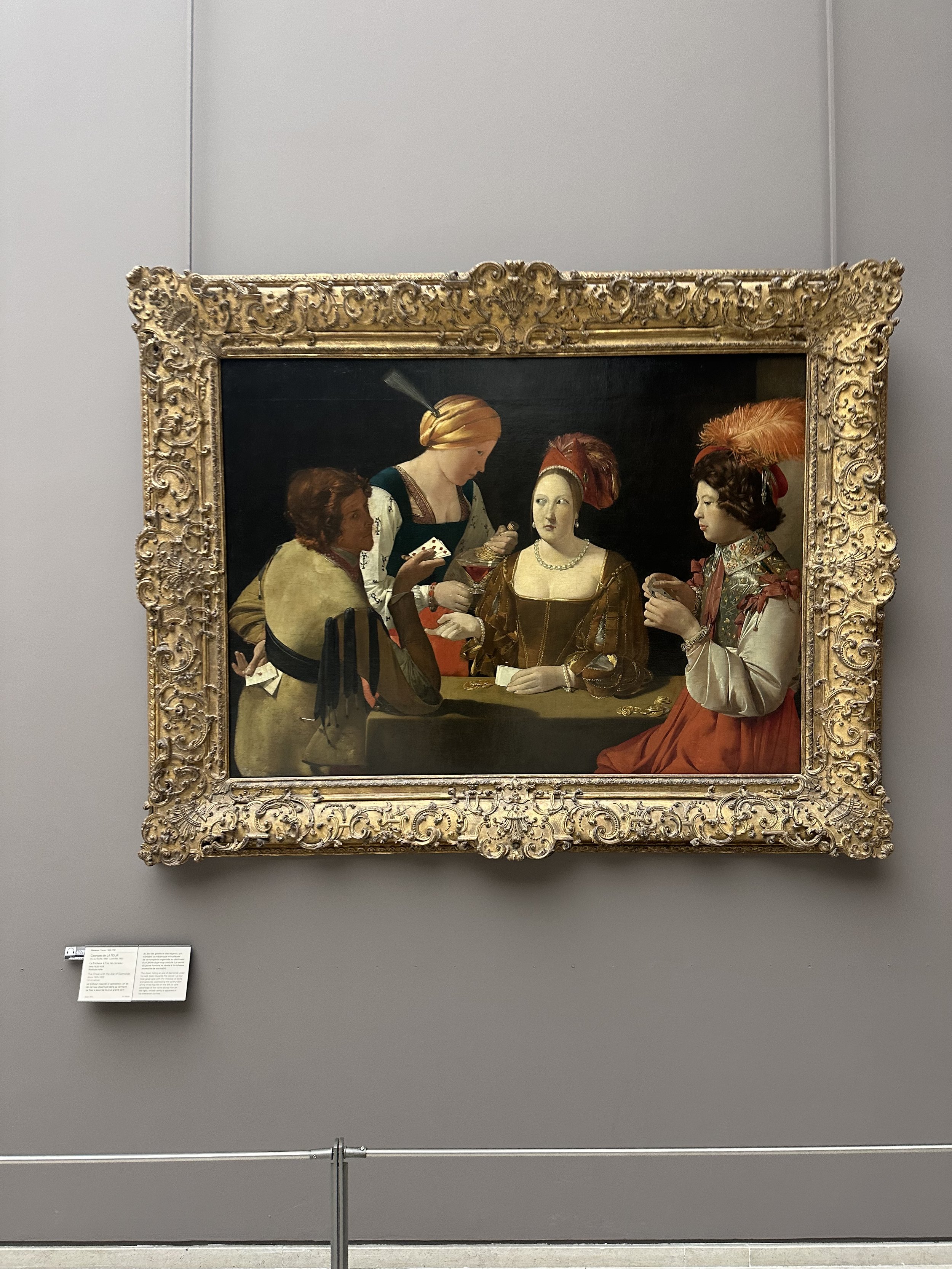On July 26 the Paris 2024 Olympics opened with the ceremonial lighting of the cauldron. Since April the Olympic flames traveled from Greece through just about every corner of France and even to French territories in the middle of the ocean.
Let’s look at a few of the moments of the Opening Ceremonies that are tied to art and what have garnered a lot of internet attention.
To start the masked torch bearer that ran through the city. Many think he was a character from Assassin’s Creed and it partially is but also he was a character dreamed up using the Man in the Iron Mask, Phantom of the Opera, Fantomas, Arsène Lupin, and Belphégor who haunts the Louvre.
Belphégor is the legend of the ghost that haunts the Egyptian collection every night and is the subject of a popular book from 1927, and a TV show in France in 1965. In the 2001 movie starring Sophie Marceau, it is an evil forgotten mummy found in the reserves of the Louvre and causes all sorts of problems.
Racing down the Seine before the final run of the torch was a gorgeous silver horse that took over a year to create and was controlled by a submarine-like boat under the water. This stunning figure represents Sequana, the Celtic Goddess of the Seine. Nothing more, nothing less. I did love when she walked the flag towards the officials in the Trocadero lighted wings of victory perfectly framed her under the Eiffel Tower.
One of the closely kept secrets was who would light the cauldron and the cauldron itself. Many months ago they told us it would be in the Jardin des Tuileries in front of the Louvre but what it would be was something we could not have imagined.
Mathieu Lehanneur designed the torch and the cauldron and created something that will be hard to ever top. A hot air balloon with a very special nod to history sits over a 23-foot-diameter ring of fire. However, it’s not the fire you think. It was created by EDF and is made of beams of LED light and a mist of water and is 100% renewable.
Why a balloon you ask? Well, this is Paris and nothing happens by chance. The patrimoine, or heritage is taken very seriously here and the balloon is a nod to an event that happened on December 1, 1793. Professor Jacques Charles created a hydrogen balloon and on that date from close to the very spot the balloon sits today Charles and Nicolas Robert took off from the ground and floated 27 miles while more than 400,000 people watched along with Benjamin Franklin. Aghast at the sight of flight just over their heads.
On the south wall near the entrance to the garden near the Place de la Concorde is a plaque remembering this event that few ever notice. I have a feeling more people may spot it now, or maybe that’s just a hopeful wish.
At the time there was a race between Charles and the Montgolfier brothers. On September 19 the brothers sent a duck, sheep, and a rooster into the air while Louis XVI & Marie-Antoinette watched at Versailles. The animals survived the flight but the duck’s beak was broken when the sheep sat on it in the descent. The sheep went on to live out their final days in the hamlet of Marie Antoinette.
On November 21 the brothers set off the first manned balloon flight from the Chateau de la Muette and flew over the Tuileries reaching its highest point before coming down on the Butte-aux-Cailles On the flight were the first two French astronauts, the Marquis d’Arlandes and Jean-Francois Pilâtre de Rozier. Just two years later Rozier died while trying to cross over the English channel.
The balloon sits over the eastern basin of the Tuileries which also happens to line up with the Axis Historique. The special line drafted by Alexandre Le Notre in the 18th century lines up the Bernini statue of Louis XIV near the Pyramid of the Louvre and a straight line through the Arc du Triomphe du Carrousel, the Cauldron, the Obelisk, Arc du Triomphe, and out to the Arc of La Défense
This was not an accident.
As for the Cauldron, each night from sunset to 2 am it will rise again 197 feet or more than 18 stories into the air. The artist is also mounting a campaign to keep the balloon and cauldron in the Tuileries full-time.
Meanwhile, inside the Louvre the characters of paintings have jumped out to watch the athletes pass by on the Seine. Although they have them looking into the Cour Carrée and not the Seine.
During the ceremony, a few heads were spotted in the Seine just past the Louvre. Not just any figures, they belong to some amazing paintings you can find inside the Louvre.
Starting from the Pont Royal is the stunning Madeline by Marie-Guilhelmine Benoist. The actual title of the piece is A Portrait of a Black Woman. Painted in 1800 it changed the landscape of art. Madeleine was a beautiful black woman who came from Guadalupe when Marie met her. Using the classic pose that she learned under J L David she placed Madeleine on a winged chair and draped her in white fabric with a touch of blue and red in the Empire style and suddenly transformed how black models were seen.
Marie Guillemine de Laville-Leroux Benoist is a mostly unknown artist. Born December 18, 1768, in Paris into a political family which would help her enter into one of the most prestigious ateliers in Paris.
At just 13 years old she began training with Elisabeth Vigee Le Brun who was the First Painter to Marie Antoinette. Her talent was noticed and in 1784 she exhibited for the first time at the Salon a painting of her father. The 18th century wasn’t kind to female painters but under the lead of Le Brun, she was able to traverse the art world and get noticed by a few of the biggest names.
In 1788, Marie was asked by Jacques Louis David to join his atelier. The king of the Neoclassical movement was happy to take women in as a way to get back at King Louis XVI who forbade women artists to train in the Louvre. At the time David lived and had his studio in the Louvre. Most women were relegated to painting flowers & landscapes, but David suggested she try her hand at historic subjects.
In 1800 she created a painting that changed the landscape of art. After a visit to her brother-in-law's home, she met Madeleine and decided to paint a subject that was rarely seen in art at the time. Madeleine was a beautiful black woman who came from Guadalupe when Marie met her. Using the classic pose that she learned under David she placed Madeleine on a winged chair and draped her in white fabric in the Empire style and suddenly transformed how black models were seen.
The model was unknown until a few years ago before an exhibit at the Orsay unveiled her name. On June 27, 1818, the Director of the Maison du Roi purchased the painting with three of her other paintings. Under Louis XVIII the painting was sent to the Louvre. I wish she was somewhere where more people could discover her but until that day, be sure to search for her when you visit the Louvre.
The next woman is featured in George de La Tours The Cheater with the Ace of Cards painted in 1636. Three grifters work together to steal the money of a rich young man by hiding an ace behind one of their backs. Our lady in the Seine is the Courtesan with a red hat decorated with an ostrich feather and pear drop earrings. The pearls are a giveaway that she is a prostitute
And you thought pearls were so classy.
Next, we have Muhammad Qasim’s Portrait of Shah Abbas Ier drawn in 1627. Sadly not on display in the Louvre at this time. The drawing is of the Shah and his page boy who clutches a wine flask near the elder’s lap. I’ll let you figure out that symbolism. On the painting is a quote:
“May life provide all that you desire from three lips: those of your lover, the river, and the cup.” rather fitting on the banks of the Seine.
My other favorite painting that is sure to always catch the visitor’s eye is the presumed portrait of Gabrielle d’Estrées and her sister the Duchess of Villars. There is still a lot that is unknown about this painting, including that of the subject and the artist. Attributed to the Fontainebleau School in 1594, it is believed to be Gabrielle and her sister, the Duchess of Villars who held her nipple between her fingers, which was a gesture symbolizing pregnancy. Gabrielle would have been five months pregnant with the future Duke of Vendome, Henri IV’s illegitimate son. In Gabrielle’s left hand, she holds a ring between her fingers, the coronation ring of Henri– a token of his love and loyalty. In the background sits a woman sewing, could it be baby clothes?
Gabrielle d’Estrées is a woman known more for her risque painting than for her life itself. Gabrielle was born around 1573, and daughter of Antoine d’Estrées, Baron de Boulonnois and Françoise de la Bourdaisieres. She was one of eleven children, seven of which were girls, and gave them the moniker “seven deadly sins” by the Marquis de Sevigné.
The union of Gabriele and Henri resulted in three children. Caesar in 1594, Catherine in 1596, and Alexandre in 1598. All three were legitimized in the eyes of the monarchy and the church as Henri’s children. In 1599 she became pregnant again. Each of her pregnancies was very easy, but this fourth was giving her a lot of issues. Sick every day she struggled for five months.
On April 6, 1599, she left Henri behind at Fontainebleau, it was just a few days before their wedding planned for April 11, Easter. She cried and sobbed and had to be pulled off of him, on what would be the last time she saw her love. On April 7 she dined with Sebastion Zamet, an Italian who had arrived in France with Catherine de Medici and was also close with Marie de Medici. That night at dinner when she said she wasn’t feeling well, Zamet gave her a frosted lemon. The next day she began having contractions and pains, she was only 5 months along.
The baby had already died and doctors tried to figure out what to do as she got worse. After a day her face and neck suddenly turned black leaving the doctors baffled. When word finally reached Henri at Fontainebleau he travelled to Paris as fast as he could but it would be too late. On April 10, at just 26 years old Gabrielle would die, the day before their intended wedding.
Distraught, Henri planned a lavish funeral at the Eglise Saint Germain l’Auxerrois fit for a queen. Henri dressed in black for months, shocking most as white was the normal color for royals in mourning. A lifelike effigy was created and placed in the room next to his where he would sit with her and eat his meals.
Less than a year later Henri would marry Marie de Medici.
There has been a lot of news about one moment in the Olympics. Held on the Passerelle Debilly a fashion catwalk of performers that flashed across the TV screens in between the athlete parade.
The day after the internet was a flutter in responses thinking it was a reenactment of the Last Supper by da Vinci. A few things first. The Last Supper resides in Milan and while many armchair internet art historians think they have it figured out most are very far from the truth.
Art has a long history of shocking people. Manet’s Dejeuner sur l’herbe and Delacroix’s Liberty Leading the People are two of the most famous that caused a stir by mixing Greek statuary with contemporary figures.
Just because a painting is a large group of people at a table it doesn’t mean it is the Last Supper. In the Louvre you can find the largest painting in the collection, Veronese’s Wedding Feast of Cana, and in the Orsay, we have Thomas Couture Roman Decadence better known as the Roman Orgy. Both are at a large table. I overhear people all the time thinking the Vernose painting is the Last Supper. You can also find the Last Supper in the Louvre by French and Northern School painters as well.
Especially within the Northern School steps from the Medicis gallery are two paintings dedicated to the Feast of the Gods and the Wedding Feast of Thétis et de Pélée. Around a table are the many gods including Mercury, the Three Graces, Neptune, Apollo, and the Muses of Zeus, Athena, Mars, and Bacchus. Bacchus is normally depicted with a crown of grapes vines as he is the god of Wine and pleasure. This is the Olympics that originated in Greece where a very deep tie to mythological figure
At the start of the scene at the opening ceremony, Festivité flashed across the screen. Which tells you everything.
France loves a celebration and every day you are to slow down and enjoy your cafe or dinner with friends and loved ones enjoying amazing food, wine, and conversation. All one needs to do is walk the streets of Paris every single night of the year and see that for yourself.
The creators of the opening ceremonies wanted to avoid the Paris Cliché that has been created and regurgitated for decades. Paris is not Emily. It is not red berets and khaki trenchcoats and it is not mimes. They wanted to teach the world what Paris is and its history and culture.
Most of my wonderful clients who book tours with me are already knowledgeable in French history and art. I love touring people across the cobblestones of Paris and talking with them about what they know of Monet or Delacroix when I share with them addresses where they once lived.
If anything what the controversy has shown us is that the world is becoming more uneducated. A combination of shorter attention spans, getting all their information from sources that are not always correct, and also taking art education out of schools has led us to this point and I for one, find it quite sad.
So we are forever grateful for our listeners and followers who always have a thirst for knowledge of all things creative and France.











